Nothing can set your training back more than getting injured. When you are young, minor things heal quickly. But as you get toward middle-age and older, there is really no such thing as a minor injury.
What would have been a “tweak” years earlier is now the setting for a permanent disability that may heal up enough to let you train again but never really goes away. Bones heal stronger after they are broken, muscle and connective tissue, unfortunately do not.
Therefore, the key to getting out of the injury/rehab cycle and sustaining lifelong pain- free training is—don’t get hurt in the first place. But even if you roll yourself in bubble wrap and never leave the house, there’s no guarantee. Doing nothing can mess you up just as surely as doing too much.
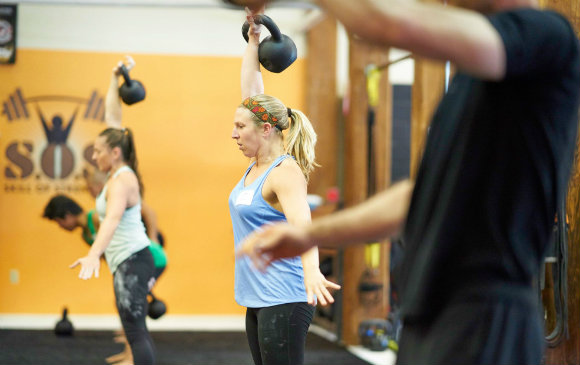
I was talking with CEO Eric Frohardt the other day, discussing our litany of injuries accumulated over the years when he said I should write an article on a simple topic like, “How to avoid injury.” I laughed out loud. “How about something simpler,” I asked. “Like what is the meaning of life?”
But the more I thought about it, the more I liked the idea. There are volumes written about how to recover from the various tweaks and pulls that hard-charging trainees acquire, but very little on how not to accumulate them in the first place.
Since this is StrongFirst and principles, not methods, are our foundation, the approach to injury prevention also needs to be principle based, not just a list of preventative exercises. So here are the ten most important things to do as part of your training approach to minimize the risk of injury.
1. Create and Maintain Healthy Joints
Kelley Starrett, DPT and mobility guru, states in the Full Knee Range Part One episode of his MobilityWOD series that the definition of a healthy joint is one that has “full extension and full flexion plus a little bit more.”
What that means is all the joints in your body should be able to move though full, normal range of motion, plus have a little reserve in the end range. In real-world terms, that means if your ankles only dorsiflex to zero degrees instead of the normal fifteen degrees, then all the movements that require good dorsiflexion—like squatting, lunging, and running—will require some compensation from some other part of your body.

Add in knees that don’t fully flex or extend, or hips, or spine, or any joint for that matter, and you’ve got a recipe for trouble down the road. Especially when your training asks you to regularly deal with supra-maximal loads and forces, which is what occurs when we’re lifting the heavy things we love to lift.
The result of all this is something called “accumulated micro trauma” and, like gravity, you don’t have to believe in it for it to affect you. What’s accumulated microtrauma? It’s small micro-tears to muscles and connective tissues that build up over time. Think of it this way: you can’t snap a credit card, but if you bend it over and over, eventually it will come apart. That’s accumulated microtrauma.
I hear it all the time: “I don’t know why I hurt my [fill in the blank], I’ve been doing this movement for years.” Check your range of motion regularly and get to work on tight and restricted areas—unlocking adhesions and softening gritty, glued-down tissue.
2. Align Before You Load
Gray Cook, MSPT, OCS, CSCS, believes that asymmetry is the leading cause of injury and I agree. Now, everyone is asymmetrical to some degree. And I don’t believe “perfect” symmetry is possible nor necessary for minimizing injury risk or increasing resilience, but at the very least both wheels must be pointing in the same direction for a car to drive fast. And this is the approach I take in my daily range-of-motion and alignment assessment. I want to make sure my wheels all point in the right direction, the tires are inflated, and the oil is filled.
Regardless of the mobility or flexibility approach you use, starting the day with your frame and muscles as square, plumb, and neutral as possible gives you the best chance of all the parts working together when you then proceed to load them with kettlebells, a barbell, or bodyweight lifts.
If you go into a deadlift session and your left hamstring is missing twenty degrees more range of motion than your right one because you sat with your legs crossed at worked for twelve hours straight the day before, then your situation is not even close to optimal. It takes very little to get things squared up again, but if you don’t even know your alignment is off, it can hamper your training and set the stage for a tweak, an injury, or something worse.
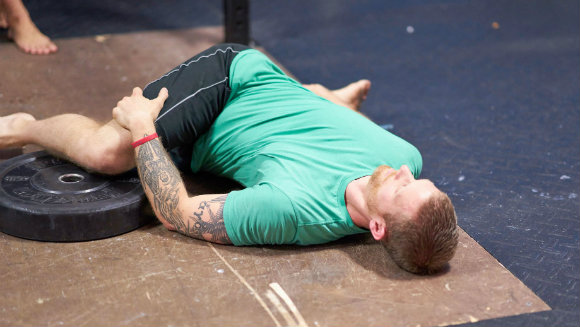
3. Have an Actual Training Plan
So many people go into the gym with no real idea what they are going to do that day. Or, if they do know, they are not sure how they performed the last time they did that same training session and how they should then progress it. This is a recipe for disaster and not making progress is the least of it.
“Avoid random acts of variety” is one my favorite phrases. This refers to just going into the gym and winging it, going by feel and hoping for a good “workout.” Technique practice, deep skill, and mastery can never result from this approach. It’s easy to get sore and think something positive is happening, but getting sore is a sign of a mistake in training approach, in my opinion, and should not be a desired goal.
It’s far too easy to go too heavy or do too many sets or reps with a haphazard approach, and you won’t know you did too much until the next day or two, when you can barely move, much less continue to train. Know your goal, make a plan, prioritize your weaknesses, and follow the plan. At least this way you have a chance.
4. Cycle Your Training
I call it the tough guy cycle: medium, heavier, heavy, heavier, injured. Light, heavier, heavier, heavier, injured. Repeat until you can’t.
You will cycle your training, one way or the other. Nature will see to it.
Many keep adding weight onto the bar until they can’t, and the reason they can’t is because something got tweaked. One of the most important aspects of a proper training cycle is the deload or back-off week. Without a “wavy” training plan in place, the approach usually goes linear, like the tough guy cycle. I mean, why back off if you are still going up, right?
Because the next step off a peak is always down.
You have two options when it comes to that peak: you can step back or fall off. Stepping back hurts less (except to the ego) and leads to bigger gains in the future. Fall off frequently enough and it won’t be a tweak you’re facing, but a real injury that can set you back for a long time.
Controlling your ego and lifting with your head is one of the keys to resilience, training longevity, and avoiding injury.
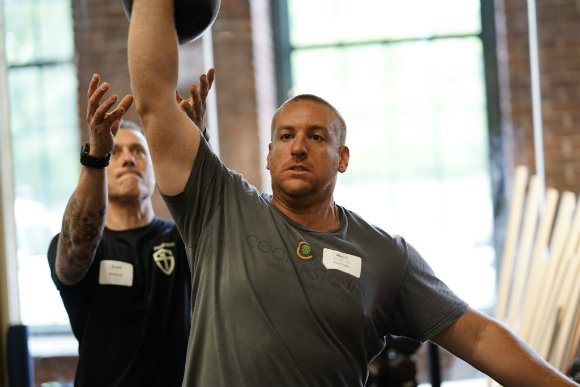
5. Don’t Be Greedy
If you seek your limits, you will find them. Things tend to break when they approach structural limitations. Like when you keep pushing when that hamstring is tender and gritty, you’re dehydrated from the party the night before, you’re a little sleep deprived and not exactly in the best state of physical balance, but you’ve got that lifting meet coming up and you can’t back off.
Except after you tear a hamstring not only is that upcoming meet over but perhaps your lifting career as well.
You must approach lifting heavy things seriously and prepare. And yes, heavy is relative. If it’s heavy for you, then it’s heavy regardless. And if that means backing off because you need recovery more than you need loading, learn to listen to that.
Learn when to back off. It’s not wimpy; it’s smart.
6. Recovery Precedes Loading
This is an extension of the last point. If you are not ready to load, spend more time on active recovery than on loading. Stretching, rolling, mobilizing, and making sure your soft tissue is actually soft is key. If your tissue resembles beef jerky more than it does raw meat, that’s a clue. It’s called soft tissue for a reason.
These tissues also need to be hydrated. Beyond ingesting enough fluids via water and food, regularly stretching and rolling gets those fluids into the actual tissues much more quickly. Foam rolling—it’s not just a good time.
And recovery extends to many things, including your sleep. If you think you can exist on five hours a night and train like an elite athlete, you are mistaken and asking for injury
Nutrition? Same thing. As Pavel says, “Meat for strength. Vegetables for nutrition.” That’s a great start. Remember also, there are no “essential” carbohydrates. There are essential proteins and essential fats, but no essential carbs. Eat what you need first, then what you want.
Now, how about your mind? How you talk to yourself and how you think are every bit as important to your training and recovery as anything else. I read a lot about Special Forces operators of all kinds, mainly to learn about their mental approach. These guys are the elite of the elite and their profession has the direst consequence of all if they “lose.” It’s not just a bad meet, but their lives and their buddies on the line.
As a result, these people are masters at controlling their minds under the most intense situations and environments. Study them and how they think. It will make a much bigger difference than you imagine.
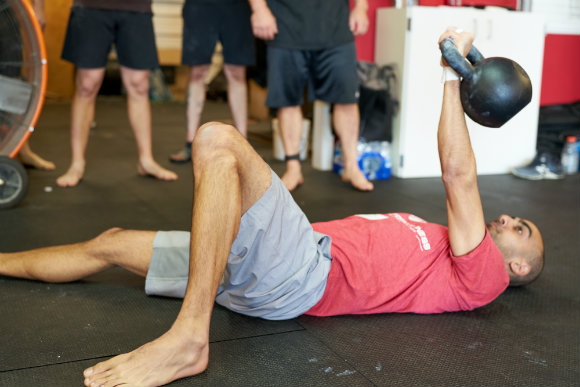
7. Master the Basics Before You Get Fancy
I see this all the time in the gym with personal trainers. If you watch them train, they usually do the basics, a few exercises done well with progressive loads. Nothing out of the ordinary, meat and potatoes. Squats, deadlifts, swings, presses, etc.
Then, their clients come in and out comes every variation of these exercises except the basic movement itself. Perhaps these trainers think their clients need to be entertained instead of taught how to do correct strength training, but whatever the reason, what they’re doing is wrong.
If a person can’t do a proper squat or deadlift or press pattern, he or she doesn’t need to do it standing on one leg on the Bosu ball while balancing a wobble board on his or her head. If a client is bored, then the weight is not heavy enough. A person should be scared enough to focus for real.
The prevalent problem in the gym is people doing too many variations of real lifts and never taking the time to master the classic version itself. Don’t be that person.
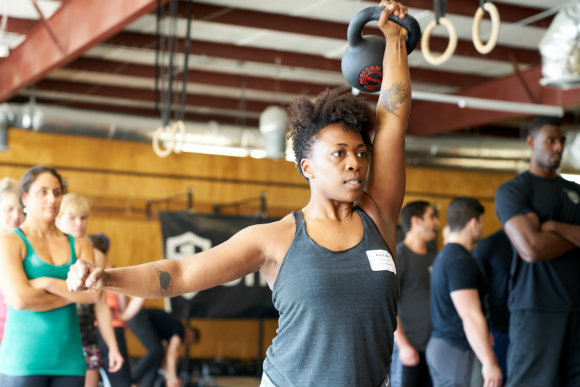
8. Know and Train Your Weaknesses
Train your weaknesses; compete your strengths. If you train your strengths first, or train them most of the time, how will your weak links come up? You only have so much energy to stimulate your body, much less enable it to recover. That a chain is only as strong as its weakest link is not just a platitude—it’s a truth.
But first, you need to know what your weaknesses are. In your body structure, in your musculature, in your posture, in your lifts. If you don’t know what they are, how can you improve them?
There are many assessments that can help you discover this for yourself, and the FMS is one of the best. In addition, there is no substitute for getting experienced coaching eyes on you regardless of your sport or activity.
It’s tough on the ego to look at your weaknesses, much less focus on them, but nothing will make your training get better faster. And nothing will help you avoid injury as much as balancing out your body on every level you can.
And remember, strengthening your mind is as important as any part of the body. Actually, it’s more important. Strength is an attitude.
9. Make Haste Slowly
Just as you wouldn’t progress from not running at all to running eight miles a day in a few weeks, you shouldn’t increase your lifting tonnage or volume too quickly either. It’s easy to be over eager when you’re starting a new program, when you’re itching for progress and opt for 5 sets when the plan says 3-5, or when you’re emulating the programs of your mentors or role models—but all of this is asking for trouble.
The sensible way to avoid injury or overuse is to start with less than you think you can do, see how your body reacts to the load, and then increase steadily but slowly. The test for whether to increase is always to ask yourself if you have recovered from the last training.
Important to consider is not just your loading for any one lift or exercise, but the total stress on your system from all the training and work you do. Stress is stress and your “stress box” can only hold a finite amount, regardless of the source. Take into account all the loading you are doing when you plan to increase it or add more items to your menu.
One last thing, just like stress is stress, force is force—and the forces from even very light ballistic movements, when done with power and acceleration, add up to many times the weight listed on the kettlebell. Experts can exert up to ten times the force on the face value of a kettlebell during a ballistic swing. This adds up very, very quickly. Your joints, muscles, and bones don’t differentiate between the “virtual force” of kettlebell ballistics and those from a much heavier object. Like all power tools it must be respected.
Go slow and go long. Growing old is not for sissies.
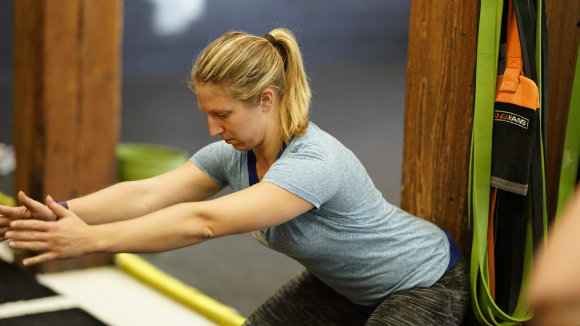
10. Listen to Faint Hints from the Body
If you feel “something” not right during a rep or a set, don’t do another one “to see if it still hurts.” Instead, rack the weight and check out what’s going on.
If you wake up every morning with the same stiff or sore area of the body, don’t ignore it until it becomes a bigger, more serious issue. Instead, deal with it immediately while it’s still a little tweak.
These faint hints are signs, messages from the body to pay attention and deal with what’s going on now. Ignore them at your own risk. It starts with a small tap on the shoulder. It ends with a two by four to the head.
Listening to your body and adapting is a key component of the Art of Training. Training is as much an art as a science (probably more) and these abilities have to be cultivated and developed if they are to serve you for the long run.
Injury Prevention Is Your Choice
Remember, nothing will slow your long-term progress more than injuries so finding strategies that help keep you strong and healthy for life are vital. Training is the source. Testing and competition are important parts of training, but the path of the athlete is about getting better with as little down time as possible.
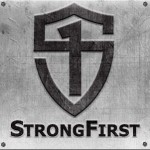


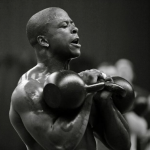

So, much truth to this article. Those of us with personalities that push too much need to take heed.
Loved it!! Very well written and hits the points.
Fantastic article, thank you! There’s a lot of wisdom in it.
Great reminders, coach! Thank you so much! Move back TO move forward!
Boom.
This information is to the point and time tested. Nobody can escape it’s reach. Check your ego and train for life. Sharing 100x’s!
Wisdom for the ages without a doubt…
Pound for pound one of the best articles I’ve *ever* read! Yes, you are able to write more detail (and have). Yes, you’ve written articles with more focus. But there is SO very much in this!! The sentences read simply and are easy to understand; and unshakeably backed by science and experience. Plus, we don’t *really* have to understand deeply the ‘why’ of it all, do we? I don’t understand electricity either, but use it every day.
If a person (new or elite) followed this, if TRAINERS followed this with their clients, results would be amazing!
This is the foundation of health and longevity on one page. There is an art to condensing so much into a small and easily understood piece of writing and your talent is not overlooked.
Thank you!
Great Article. I wish I had read an article like this in my 20s or 30’s instead at the age of 50.
“A person should be scared enough to focus for real.” What a fantastic and simple approach regarding kg selection. Will be saving this article, knowing I will refer to it again and again. Would love more information regarding the mindset of the Special Forces Ops. Might you link those? Thank you!
What great article Mark, thank you.
I would be interested in knowing whether the kettlebell snatch or the overhead single arm press with kettlebell has been implicated in causing the phenomenon of ‘frozen shoulder’. I had been doing these exercises about a year ago and shortly afterward my left shoulder became just that: a frozen shoulder. It could very well be that my form wasn’t what it should have been. I have since avoided doing that exercise. I was just interested in knowing whether the folk in StrongFirst have heard of there being any connection between the frozen shoulder and the kettlebell snatch.
Great article Mark. Every point is worth considering, and applying.
Excellent article Mark!
Thank you for your wise advice!
L
this should be the first article anyone reads at SF.
thanks David, high praise!
Absolutely! All here is that important. Must read article for my students.